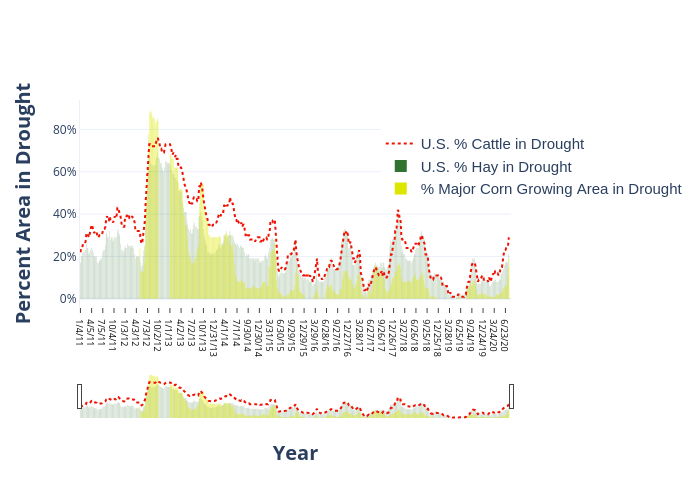Livestock Wx
Drought Trends for April 16, 2019: Parts of the Southwest and Southeast Could See Drought Expansion Over the Next 15-Days
Two rapidly-moving strong storm systems brought severe weather and widespread precipitation to a good portion of the country. Widespread rainfall and snow fell across Idaho, Montana, northeastern Nevada, Utah, and Wyoming. South Dakota observed very heavy snow of over 2ft. in some places. Moderate to heavy snows also blanketed Minnesota, Wisconsin, northern Michigan, and northern Illinois. In the Plains, moderate to heavy rains (1-3 inches) were measured in portion of Oklahoma and Texas, which then moved into the lower Mississippi and Tennessee Valleys.
Very little precipitation fell on most of the Southwest. For the Plain: the southern, central, and extreme northern Plains saw very little precipitation. Temperatures were mostly below-normal in the western two-thirds of the U.S., especially in the northern Plains and upper Midwest (6 to 12 degrees Fahrenheit below normal), and above-normal in the eastern third of the Nation (6 to 9 degrees Fahrenheit above normal).
For the contiguous U.S., drought decreased by about one percentage point. There was a slight expansion of Abnormally Dry conditions in the Texas Coastal Plain, North Florida, and South Carolina.
1% Cattle in Drought

1% Hay in Drought

The percentage of corn, cattle, and hay that are considered in drought continues to decline. This week finds 1% of cattle, 1% of hay, and 0% of corn in drought. These percentages continue to be the lowest for all three since these stats started to be tracked in 2011.
Interactive chart showing cattle, hay, and corn areas in drought since 2011. The data are ranked from highest to lowest in drought. Mouse over the chart to see individual years.
Potential Areas of Drought Improvement and Deterioration
The below images show the current U.S. Drought Monitor and the 15-Accumulated Precipitation and 15-Day Potential Evapotranspiration Forecasts. Potential Evaportranspiration, or PET, is the amount of evaporation that would occur if sufficient water is available. Basically, you can think about it as the amount of water that could be evaporated from the soils and plants (if water was not limited, which is why it has “Potential” in the title).
The central to eastern portion of the U.S. will continue to see precipitation over the next 15-days. Areas that could receive little precipitation and see high PET rates over the next 15-days are southern Georgia/northern Florida, and parts of the Southwest U.S. These areas could see drought start to creep in or at least you might start see an expansion of yellows and oranges for these areas on the U.S. Drought Monitor.
April 6, 2019 U.S. Drought Monitor. Counties shaded in purple have cattle densities of 50K head or more.

